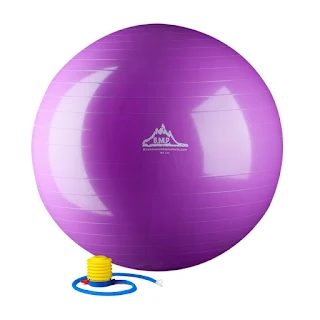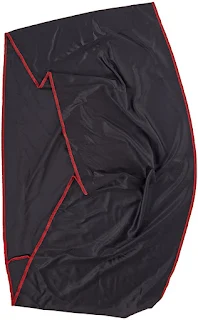We can also use these tools to help him build new skills and strategies in the comfort of our own home, saving us some money in the long run because we don't have to book as many occupational therapy appointments.
Needless to say, I'm a big fan of doing therapy at home.
Here is our favorite vestibular and proprioceptive sensory therapy tools and toys for doing therapy at home. I've also included why we use each of these items and how we use them for doing therapy at home.
This post contains affiliate links.
Must Have Vestibular & Proprioceptive Sensory Therapy Tools & Toys for Doing Therapy at Home
This list of vestibular and proprioceptive sensory therapy tools and toys are our must haves. We use a combination of DIY options and store bought items from this list and use the items for a variety of activities and ideas.Obviously, if you are just getting started with your own therapy at home program, then there are lots of things to consider. For instance, you need to consider your child's own sensory needs and preferences. You should also consult with an occupational therapist before beginning any therapy at home program. You must also consider how much space you have to dedicate to this equipment. Finally, your child's age and abilities are also important to consider.
So, in no particular order, here are what we use and love and why we include it in our home for therapeutic purposes.
1. Mini Trampoline
Before we knew J had sensory issues or autism, I bought a mini trampoline as a way for him to burn off energy during our long winters. Jumping provides great proprioceptive sensory input and J has always been a proprioceptive sensory seeker. He would jump on beds, couches, or really anything that he could. The mini trampoline saves our couches from getting damaged. We do now have a large trampoline in our backyard as well, but the mini trampoline is nice to have in our playroom as well.
Some activities that we do using the mini trampoline include:
- Jumping and catching balls
- Jumping jacks
- As part of an obstacle course
- Hopping on one leg
- Turning it into a DIY platform swing
2. Exercise Ball
The exercise ball is a great thing for J to sit on while playing since he needs to constant move and wiggle. It helps him build his core strength and encourages him to keep his balance. I would love to also include peanut ball into our therapy at home plan, but for the meantime, we just use the exercise ball.
Here are some activities that we do using an exercise ball include:
- Using it as an alternative to a wobble stool or regular chair (lets him wiggle and fidget)
- Rolling the ball across their bodies to provide proprioceptive sensory input
- Laying on their tummy on the ball and pretending to be an airplane
- Carrying the ball around (great heavy work idea!)
- Pushing the ball through a sensory tunnel
- Pushing the ball up a set of stairs
- Playing catch with it
- Rolling it back and forth with another person
3. Hopper Ball
On a whim, I bought each of my boys a hopper ball (they were only $10 each at Superstore, so how could I resist?) because the weather forecast predicted a weekend of -50 C windchills. With that kind of temperature, going outside to play was not going to be an option. So to burn off their excess energy, they spent hours hopping around on their hopper balls. We also have an inflatable red dog hopper that K loves!
Activities that we do using the hopper balls include:
- Having races around the dining room table
- Pushing the ball through a sensory tunnel
- Riding it to hop over top of little hurdles
- Turning it into a DIY ball swing
We primarily use our balance cushion as an alternative to a wobble stool during mealtimes, piano lessons, etc. You can read more about how we use it here.
Some other activities to try using balance cushions include:
- Trying to balance it on your head while walking
- Using it as part of an obstacle course
- Standing on one leg while on the balance cushion
- Tossing it back and forth with another person
- As part of a sensory walking path
If there's one thing that I splurge a lot on, it's sensory swings. J is a vestibular sensory seeker and craves the swinging motion. So I have invested in a lot of sensory swings and have even made quite a few.
Some of our favorite types of swings for sensory therapy include:
- Stretchy Swing
- Hanging Pod Swing
- Round Platform Swing
- Platform Swing
- Ring and Trapeze Bar Swing
- Rope Ladder
- IKEA Fabric Swing
I seriously cannot live without our gymnastic mats! Thank goodness we have connections so we got these for an amazing price! But we have four sets that we use for a variety of things beyond just using them as a way to keep our kids safe while doing gross motor and sensory therapy activities.
Here are some of the ways in which we use our gym mats:
- Building forts
- Building platforms and hurdles as part of an obstacle course
- Making slides off of couches or beds
- As a sandwich to squish bodies for proprioceptive input
I like to include both a sensory tunnel and an IKEA tunnel in our house, for a couple of reasons. The two tunnels provide different types of proprioceptive input. We also like to use these two types of tunnels together because J sometimes gets freaked out crawling through our homemade sensory tunnel. So I usually like to connect it to the IKEA tunnel to help keep the homemade sensory tunnel open for him to see through.
Here are some activities to try using a play tunnel:
- Using a tunnel as part of an obstacle course
- Using a sensory tunnel as a body sock
- Using a sensory tunnel as a sensory swing
- Pushing a ball through a tunnel
- Crawling through a tunnel with a flashlight
- Using a sensory tunnel for a game of tug of war
Stretchy bands are a fun way to provide proprioceptive sensory input and can be used for a variety of activities.
Some activities that we do using the stretchy bands include:
- Using it as a foot fidget on a chair during mealtimes
- Making shapes with your body and the band
- Sharing it with a friend while singing songs
- Using it as a small body sock
We don't actually own a body sock because we just use our homemade sensory tunnel as a body sock instead. However, you may prefer to have both options available in your home. Up to you!
Here's what you could do using a body sock:
- Making shapes inside the body shape
- Crawling around the floor while wearing the body sock (try crawling like a snake, bear, or crab!)
- As a sensory retreat to read books
You're liking thinking..."a body pillow?!" Yes, really! We use a body pillow for a variety of sensory activities, including:
- Rolling child up like a burrito in the body pillow
- Squishing child's body with the body pillow
- Using it as part of an obstacle course to balance on, jump over, or throw
- Using it as a weighted lap or shoulder cushion
- Pillow fights
- Using them as a crash pad with other pillows
I considered weighted blankets for my son, but the price really was a big deterrent for me. Instead, I made our homemade stretchy sensory sheet for $15 and have had positive results. This bedsheet never leaves J's bed, except for when it's time to wash it. So our main use for it is sleep.
Scooters are great for providing vestibular sensory input and my boys love them! Definitely a great way to enjoy some vestibular input while outdoors! That's really all we use our scooter for: outdoors as an alternative to walking or biking.
Okay, if you have not heard of a balance bike before, then listen up! Balance bikes are AMAZING! They made teaching my boys how to ride a two wheeler a breeze. No training wheels were ever required in this household and my back was never sore from having to bend over and help them balance.
So skip the training wheels and tricycles and get a balance bike instead. You won't be sorry that you did!
We no longer use our balance bikes as both boys ride regular bikes now, but we used them from ages 2-4 for both boys. Highly recommend them!
Having a crash pad may not be the ideal fit for your living situation, but there are a few alternatives that you could try instead, such as making our DIY crash pad or using a large bean bag chair. You could even just stack a bunch of pillows together and have your child crash into them. Even a few body pillows would do the trick!
Here are a few ways to use a crash pad:
- Using it to squish your child up into a sandwich
- Crashing into it as part of an obstacle course
- Sitting it in while playing on the iPad or while reading a book
- Making "snow angels" while laying on it
- Using it underneath a sensory swing in case of falls
- Dragging it around for some quick heavy work
Other Ideas You'll Love
Therapy at Home Camp PacksDIY Sensory Hacks
Free Weekly Autism Planner

















